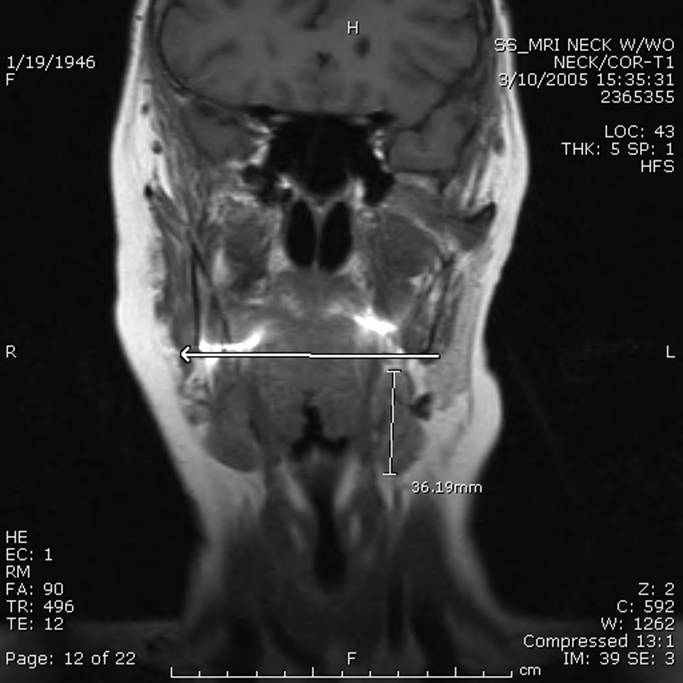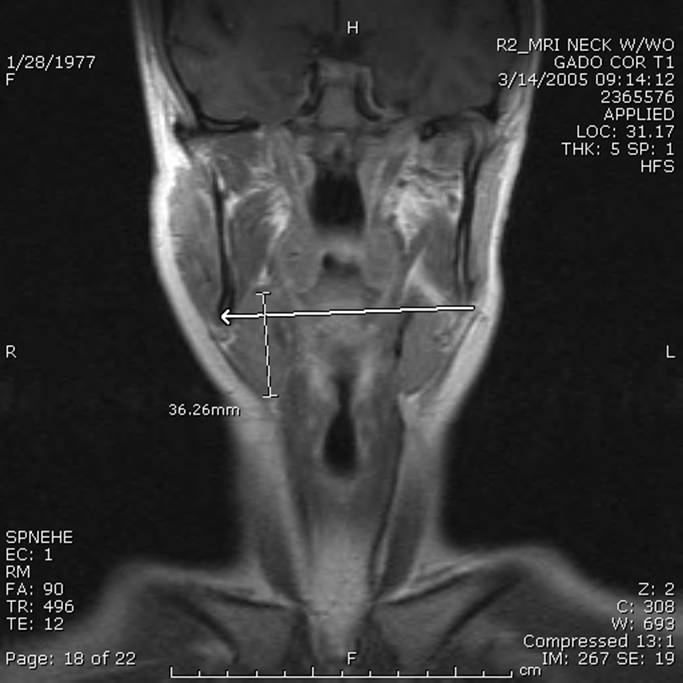Tuesday, October 10, 2006 - 8:00 AM
10638
Neck Rejuvenation: What Causes the Unsightly Submandibular Gland
Goals: The purpose of this study was to find out what happens to the submandibular glands over time.
Some people have submandibular glands that present a significant problem in rejuvenation of the lower face and neck. Patients come to us complaining about the unsightly appearance of these masses in their neck and would like to eliminate the problem, thereby giving an improvement in the cervical contour. The question is if these glands actually enlarge with time or do they become ptotic due to the laxity of the supporting elements as happens in so many other areas of the body.
Material & Methods: Magnetic Resonance Imaging was utilized due to its high contrast resolution and multiplanar capability which allowed visualization of the glands in the coronal plane providing an optimum view of the height of the gland and its relationship to the mandible.
132 neck MRIs were reviewed respectively by either of two radiologists. Subjects were between 20 and 85 years. 264 glands were studied. Measurements of gland height (craniocaudad plane) were taken in addition to a measurement of gland position based on adjacent bony anatomy (distance between bottom of the gland and inferior cortical margin of mandibular body). Gland height versus patient age and gland position versus patient age were investigated and non-parametric (Spearman) correlation coefficients were calculated with p-values.
Results: The Spearman correlation coefficient for gland height versus patient age was 0.10 (p-value=0.12). The Spearman correlation coefficient for gland position versus patient age was 0.43 (p-value<0.001).
Conclusion: There was no significant relationship between gland height and patient age suggesting no increase in gland size over time. There was a fair positive correlation between submandibular gland position with increasing age which reached statistical significance. Patient to patient variability does exist, as expected. Thus, the appearance of submandibular masses in patients presenting for neck rejuvenation is not due to increasing height or size of the submandibular glands with age, but rather to submandibular gland ptosis.
View Synopsis (.doc format, 178.0 kb)







